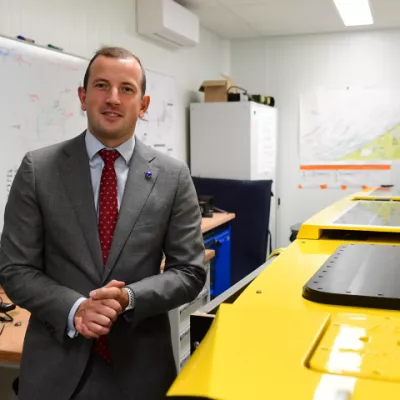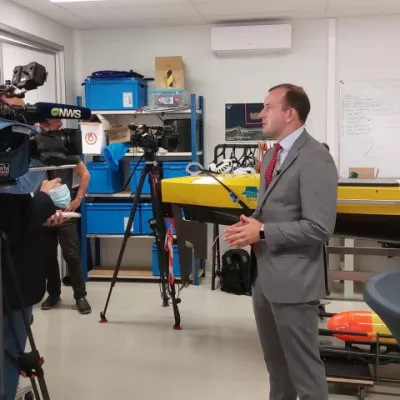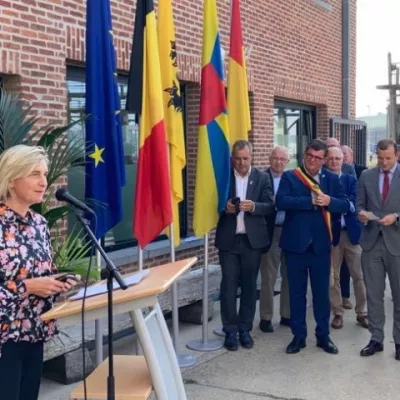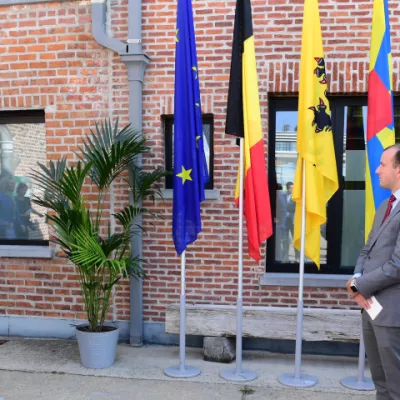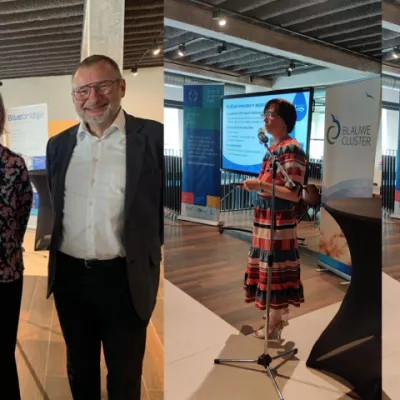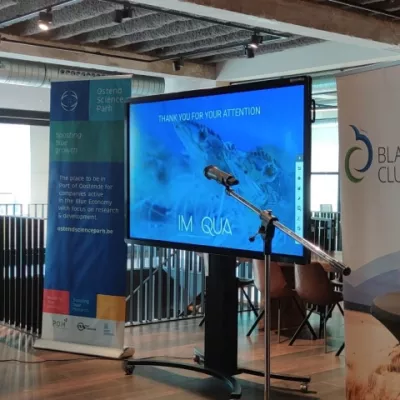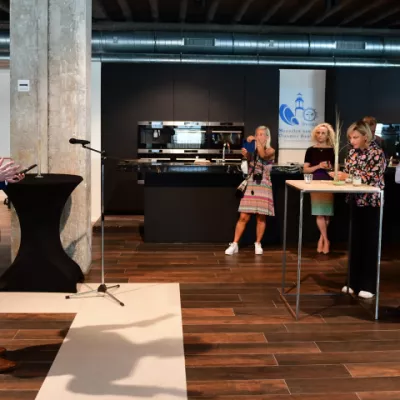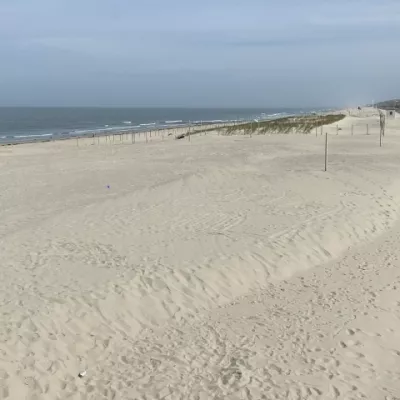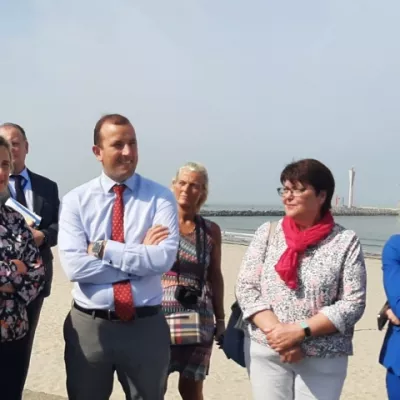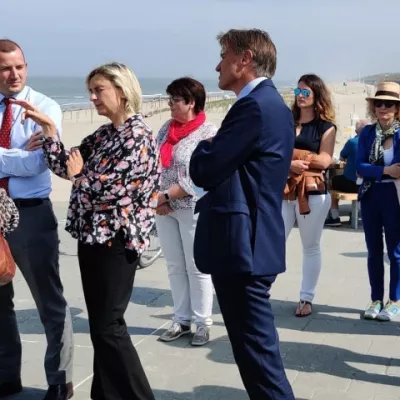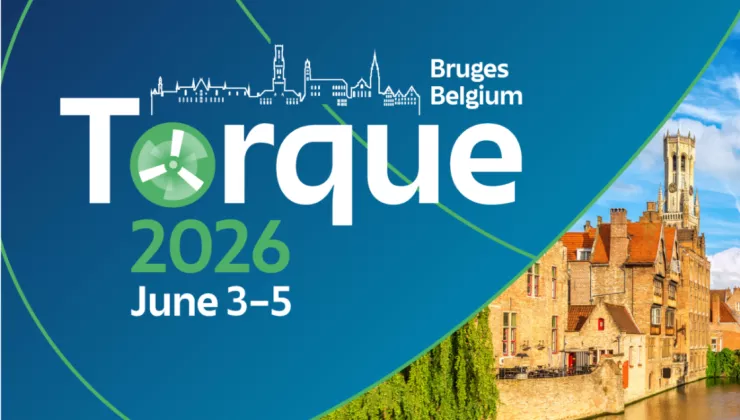EU Commissioner Sinkevičius visits Ostend
The EU Commissioner’s visit to the city of Ostend is part of Mr. Sinkevičius’ desire to find out more about local projects and initiatives in the blue economy. The programme was jointly prepared by Bluebridge, Blue Cluster, Marine@UGent, Ostend Science Park and the Flemish Marine Institute. A summary of the visit can be found below.
Programme
After a warm welcome by Ostend mayor Bart Tommelein, the EU Commissioner elaborated on the European ambitions regarding the blue economy and the potential of aquaculture to meet the growing demand for sustainable food.
Hilde Crevits, Vice-Minister-President of the Flemish Government and Flemish Minister of Economy, Innovation, Work, Social Economy and Agriculture, then gave a speech on the challenges and ambitions in the local blue economy. Afterwards, several local actors in the blue economy also gave speeches.
‘The EU is committed to protecting and cleaning its coasts, seas and oceans in order to protect our biodiversity and ecosystems. It is our main weapon to mitigate the impact of climate change. We need to reform the marine economy to protect our ecosystems, but also to safeguard the welfare of our coastal communities. Flanders proves that a sustainable blue economy is not only a concept on paper, but also a tangible reality that will help us achieve the goals of the European Green Deal.’
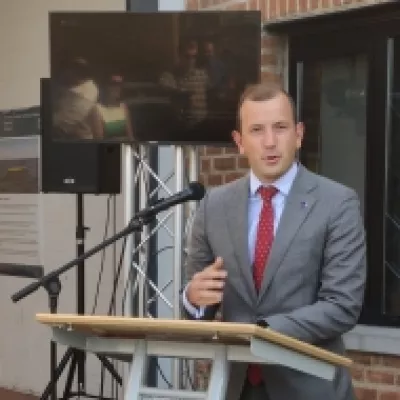
Virginijus Sinkevičius
The programme was launched in the Marine Station Ostend of Flanders Marine Institute (VLIZ), which recently opened a seawater pipeline and is home to the VLIZ Marine Robotics Centre. This centre develops innovative measuring techniques and strategies in marine robotics in order to increase the innovation capacity of marine research and the blue economy.
This was followed by a demonstration of an offshore wind farm control room, an explanation of the Blue Accelerator, which is a maritime innovation and development platform located off the coast of Ostend, as well as a visit to a project in which marram grass is planted to create new dunes preventing sand from landing on the esplanade.
Afterwards, the attendees visited the local CoastSnap station, where citizens can contribute to science by taking a picture with their smartphone and sharing it via social media. This way, they provide valuable data to monitor the coastline and study the evolution of the beach. Mr. Sinkevičius was very enthusiastic about participating in this fascinating project.
A select number of invitees then had a meet & greet lunch with the EU Commissioner in De Cierk food market. During this lunch, there were some interesting speeches and pitches on offshore aquaculture. The event was eventually closed with acknowledgements from the EU Commissioner and Minister Crevits.
